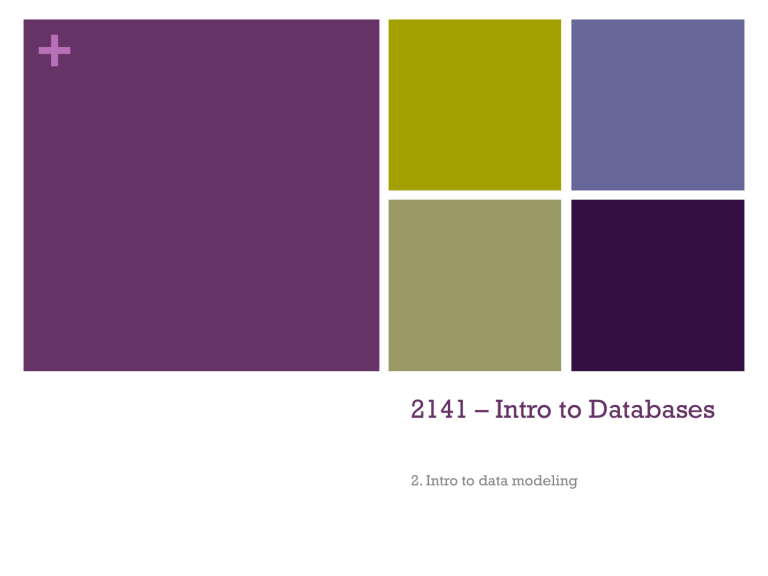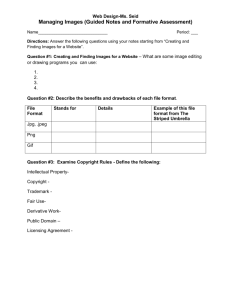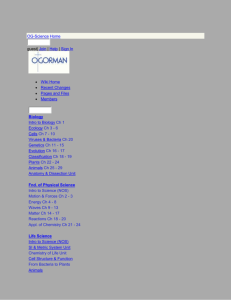01/09/13

+
2141 – Intro to Databases
2. Intro to data modeling
+
Housekeeping 1
Registering from the waitlist:
http://www.dal.ca/campus_life/student_services/academicsupport/selecting-your-classes/choosing-your-classes/wait-listsand-changing-classes.html
Basically, when you have an override, you still need to register.
Drop the class and register for it again – the system will allow you to register.
+
Housekeeping 2
Updated important dates on the syllabus:
Important Dates
Midterm Exam: February 18, 2013
Final Exam: TBA in the period of April 11-26, 2013
Final Withdrawal Date without academic penalty: February 4, 2013
Final Withdrawal Date with academic penalty: March 8, 2013
Deadlines:
Assignments: January 23, February 6, February 20, March13,
March 27, April 3;
Project: April 8
+
Homework review
Watch intro video for coursera db
Register
Watch intro video: https://class.coursera.org/db/lecture/index
Think about instances of databases misaligned with real world tasks and scenarios
Massive
Persistent
Safe
Multi-user
Convenient
Efficient
Reliable
Intro to Databases
Key concepts
Data model
Intro to Databases
Schema versus data
Data definition language (DDL)
Data manipulation or query language (DML)
Key people
DBMS implementer
Intro to Databases
Database designer
Database application developer
Database administrator
+
ANSI/SPARC Architecture
+
Internal Level
Deals with physical storage of data
Structure of records on disk (files, pages, blocks)
Indexes and ordering of records
Used by database system programmers
Internal Schema
RECORD EMP, LENGTH=44, HEADER:
BYTE(5) OFFSET=0….
+
Conceptual Level
Deals with the organization of the data as a whole
Abstractions are used to remove unnecessary details of internal level
Used by DBA’s and application programmers
Conceptual Schema:
CREATE TABLE Employee (Name VARCHAR (25),
Salary REAL, Dept_Name VARCHAR (10))
+
External Level
Provides a view of the database tailored to a user
Parts of the data may be hidden
Data is presented in a useful form
Used by end users and application programmers
External schema:
Payroll: String Name, double Salary
Personnel: char *Name, char *Department
+
Database Modeling
The process of producing a detailed data model to meet an end user’s requirements http://www.prowareness.com/blog/database-design-conceptual-designlogical-design-physical-design/
Qualities of good database design:
Reflects real-world structure of the problem
Can represent all expected data over time
Avoids redundancy and ensures consistency
Provides efficient access to data
Supports the maintenance of data integrity over time
Supports the needs of the database users
+
3 Phases of Database Design
Conceptual database design
Constructing a data model for each view of the real world problem
Constructing the ER Model
Checking it for redundancy
Validating it against user transactions to ensure all scenarios are supported
Logical database design
Physical database design
+
Step 0 of Conceptual Database
Design
Understanding the real world structure of the problem!
+
Why is a database needed?
+
What are the task scenarios?
Who are the stakeholders?
What data is important to them?
What tasks do they have to do with the data?
+
Class running example scenario
Let’s ground it in what we know
Develop it together
Use it throughout
NOT:
University records (standard in most textbooks)
Order entry scenario
Sales/parts/invoice (SFU tutorial: http://sfubusiness.ca//areas/mis/tutorials/2np/lessons/scenari o.pdf)
+
Steps
Choose a domain
Choose a task scenario (relatively complex)
Develop the task scenario
End users
Data
Natural data relationships
Flesh it out
+
Homework:
For Friday, go through the SFU scenario tutorial:
http://sfubusiness.ca//areas/mis/tutorials/2np/lessons/scenari o.pdf
For Monday, go through the Developing an Entity
Relationship Diagram tutorail:
http://sfubusiness.ca//areas/mis/tutorials/2np/lessons/model.
On Friday, we will work through our task scenario as a class
On Monday, we will develop an ER diagram



